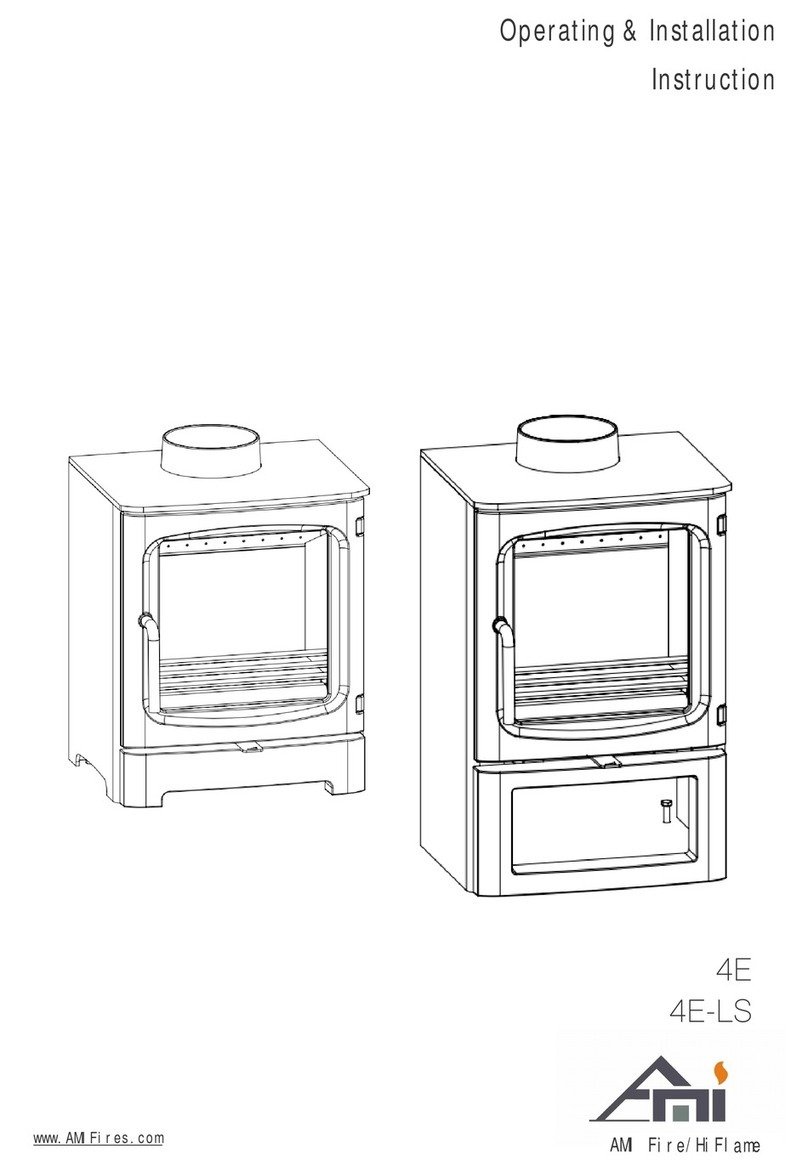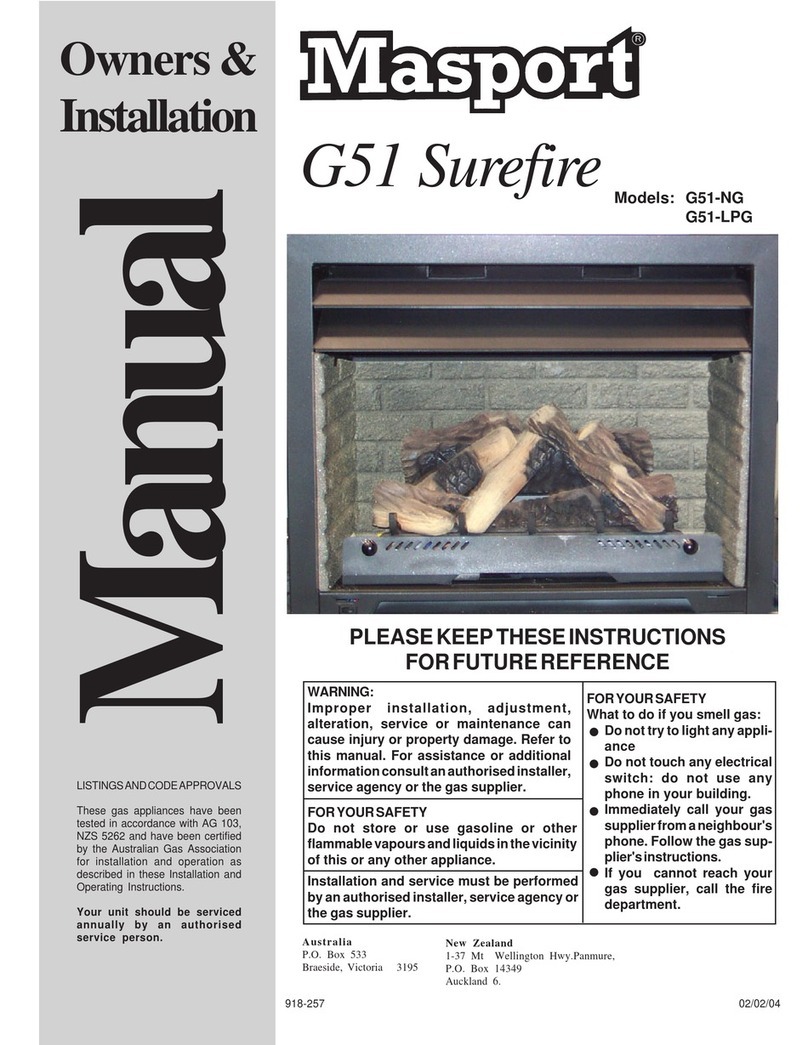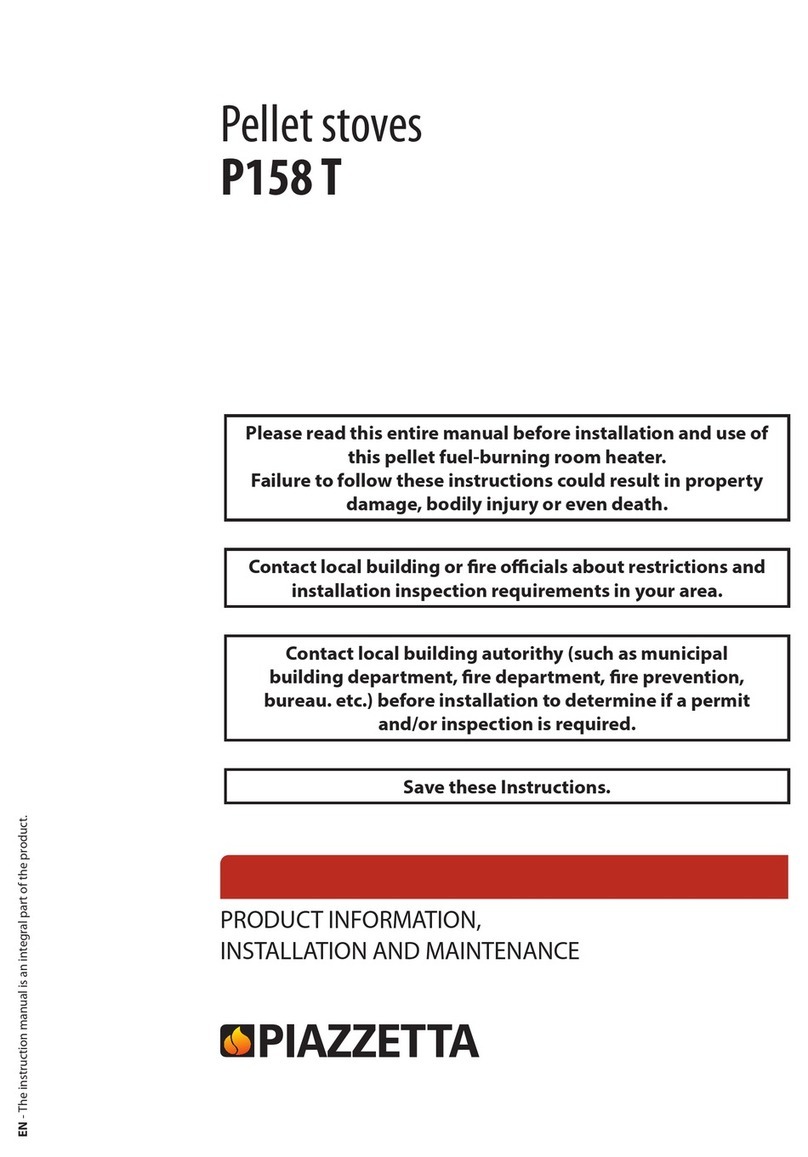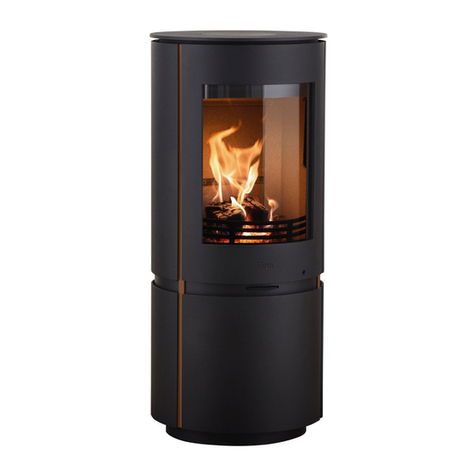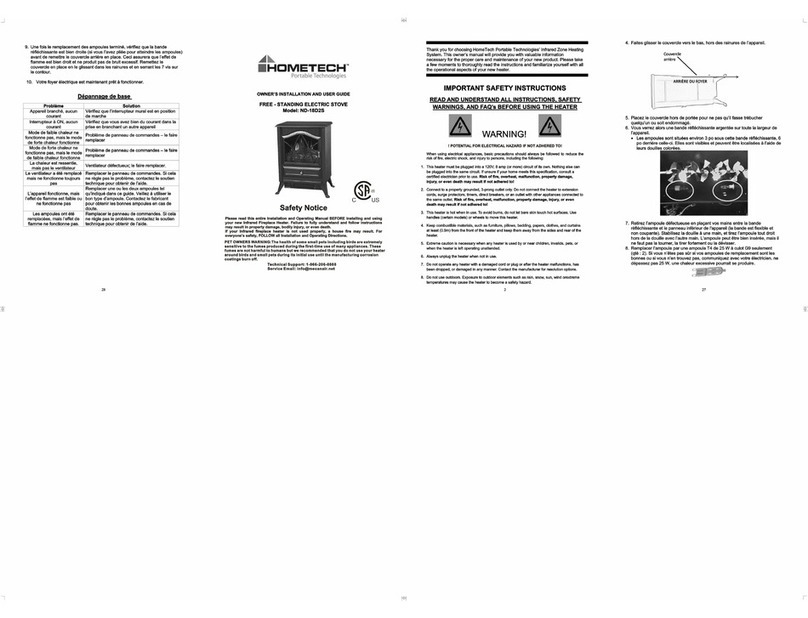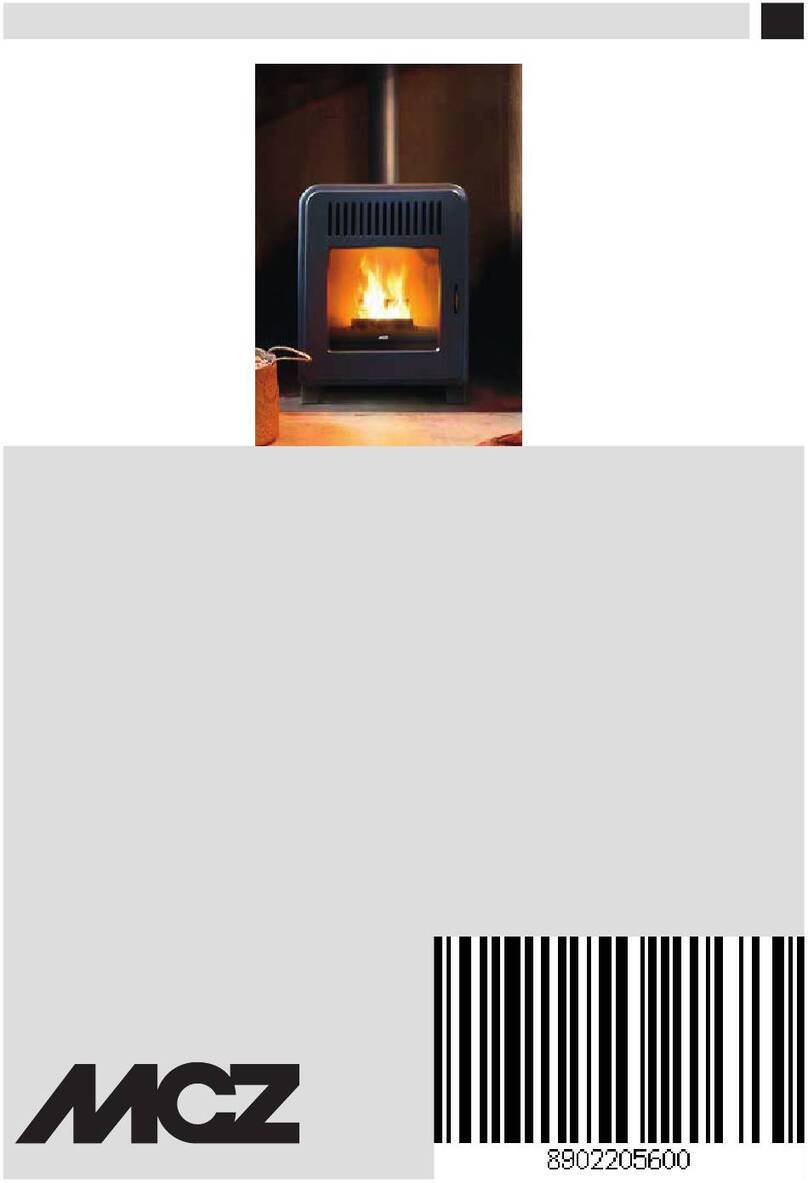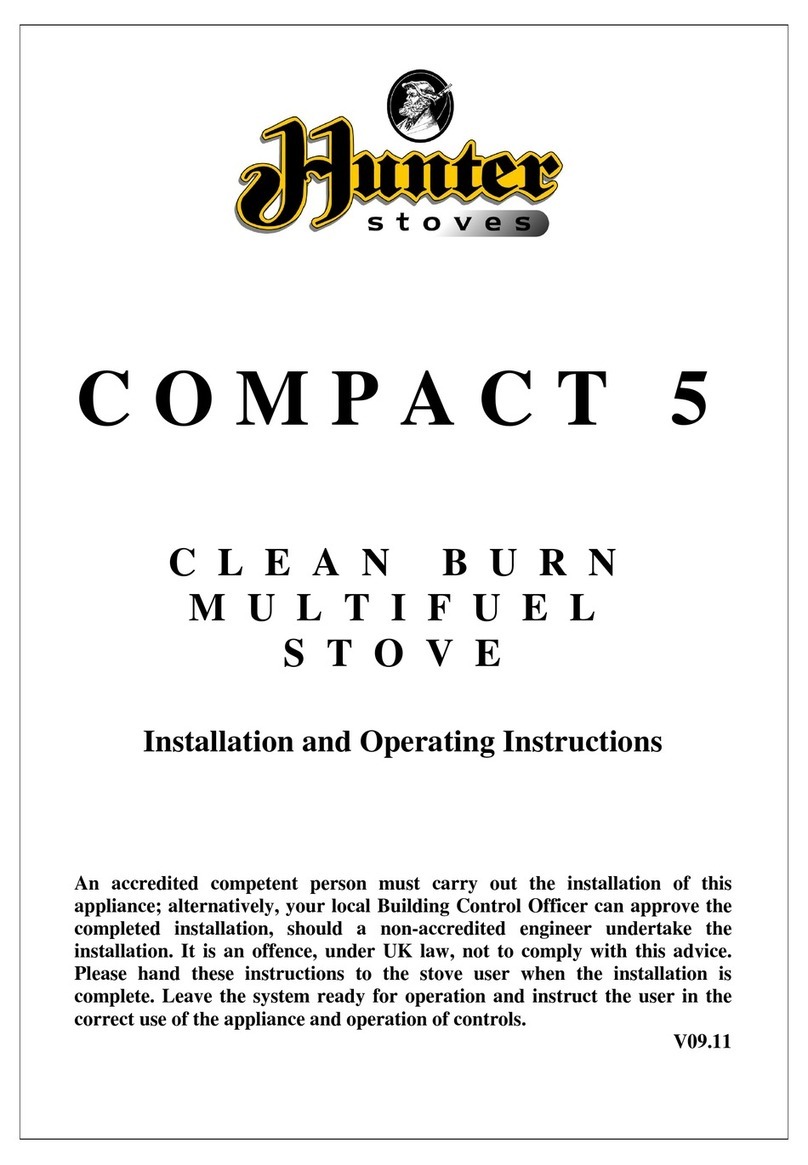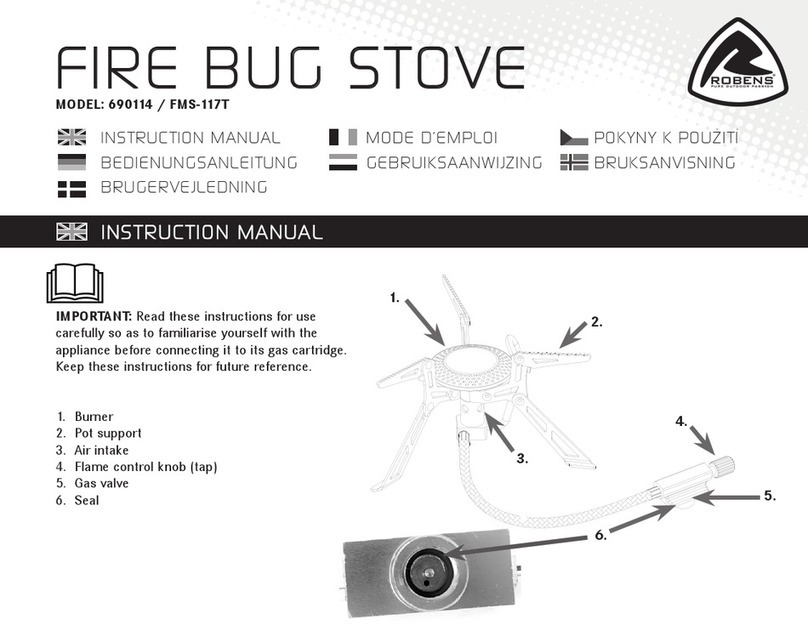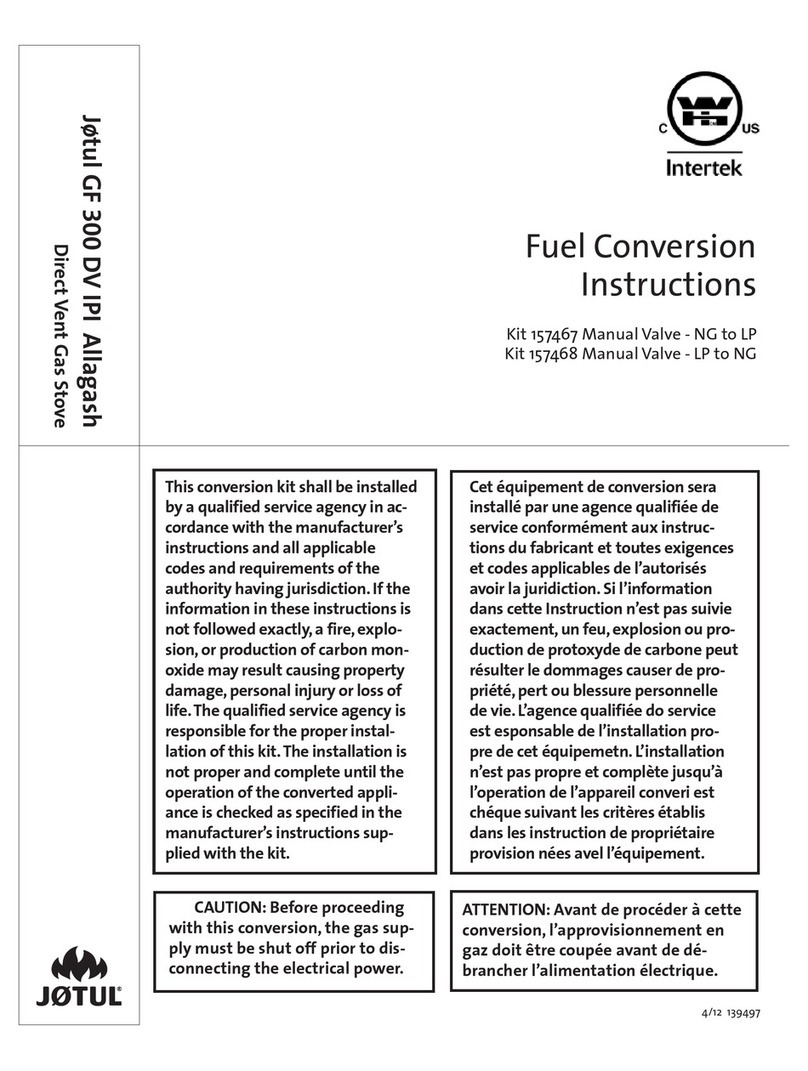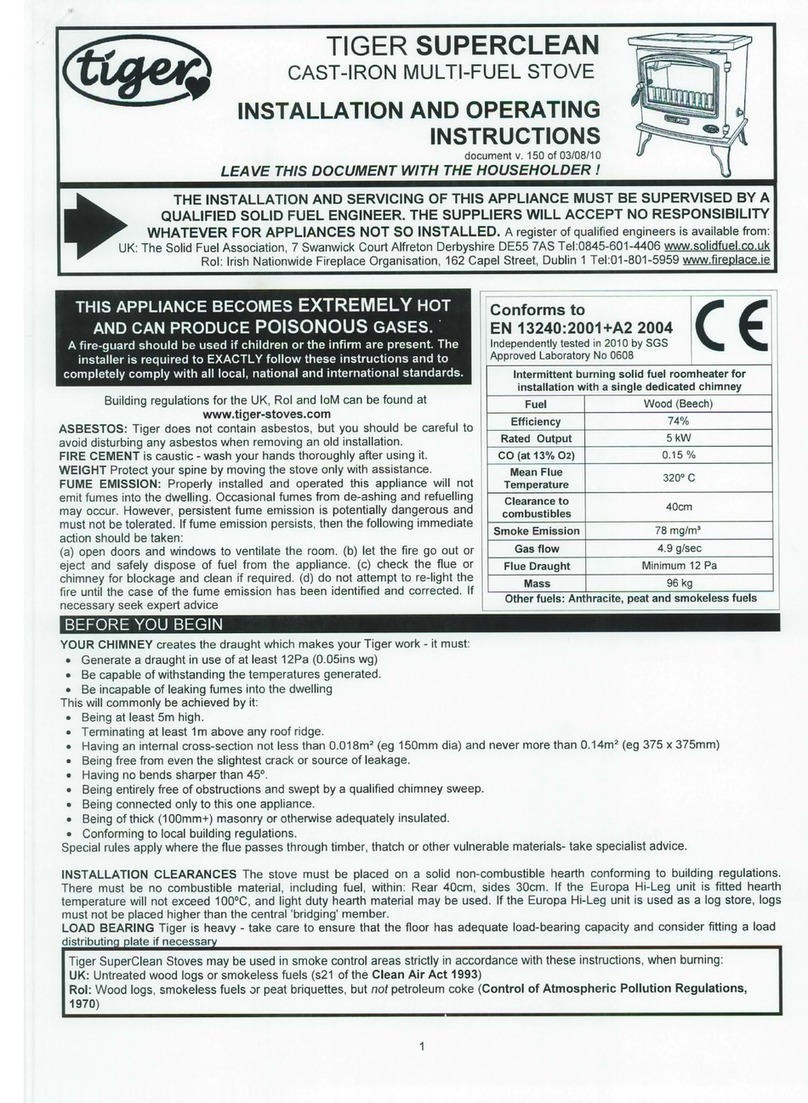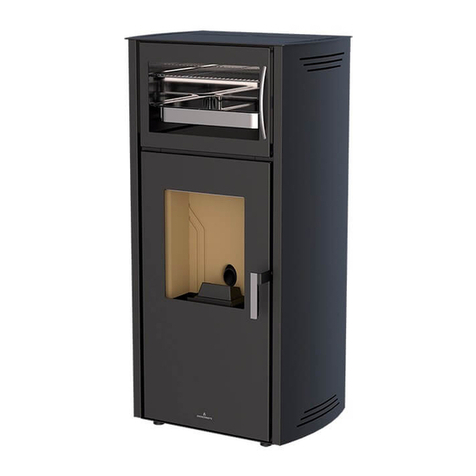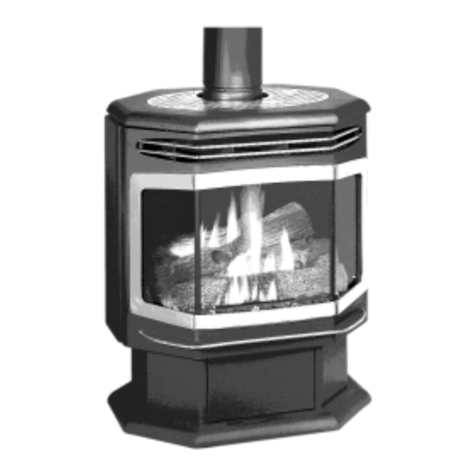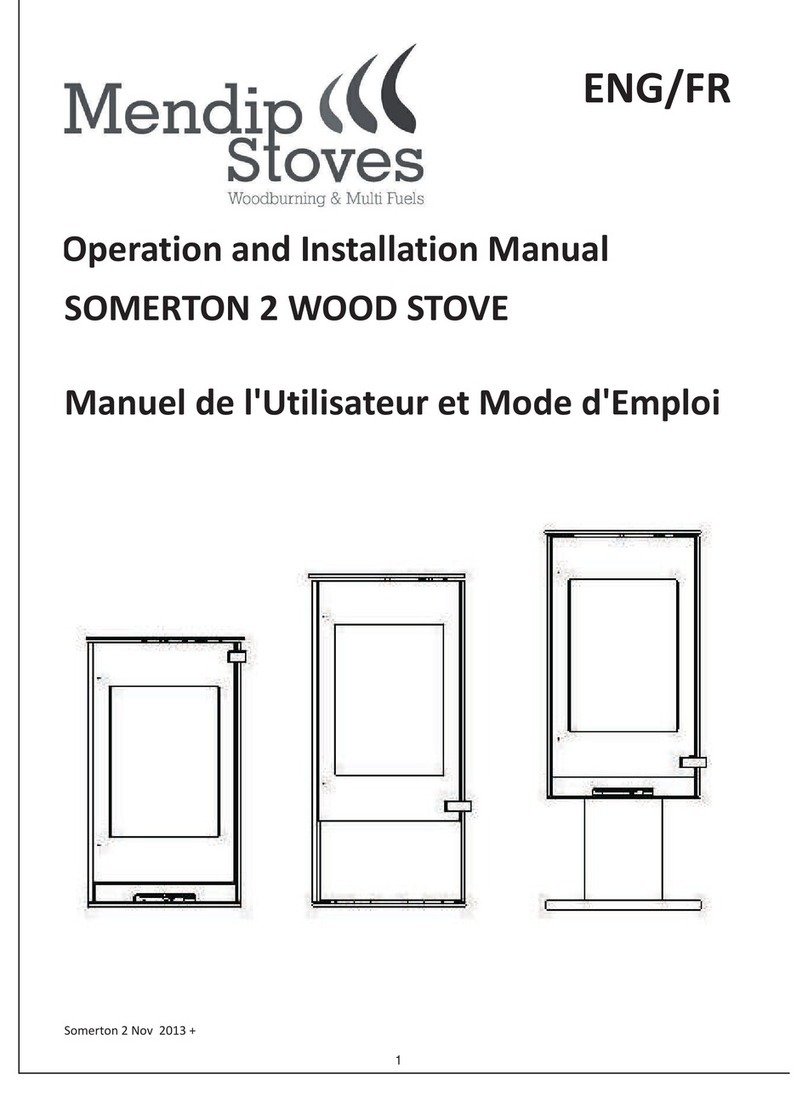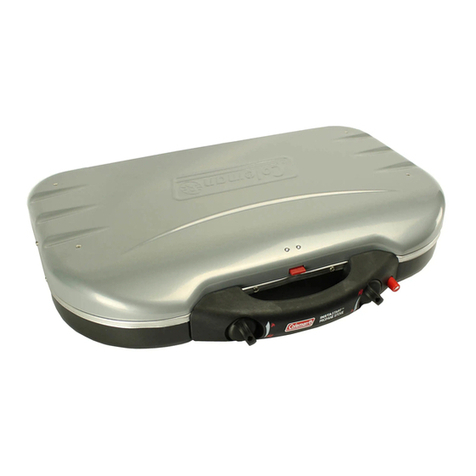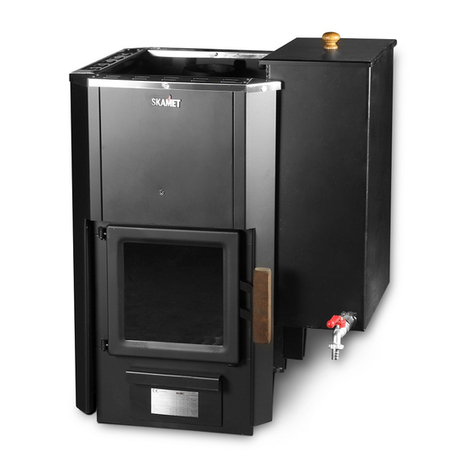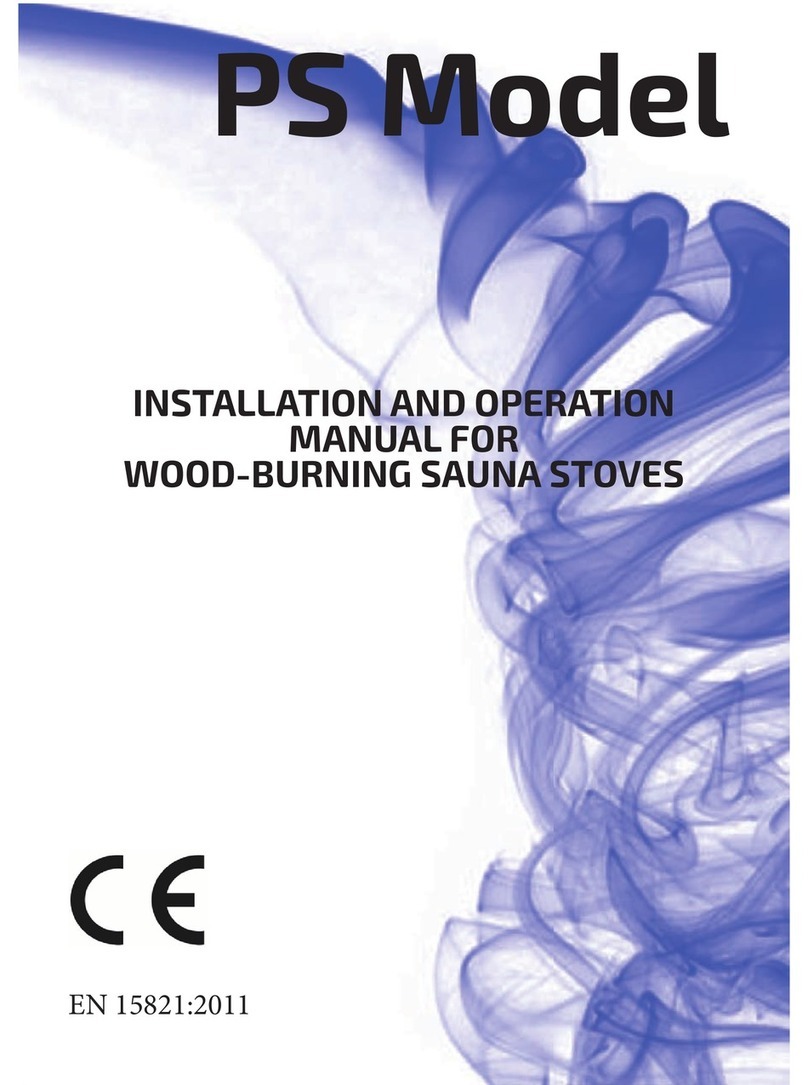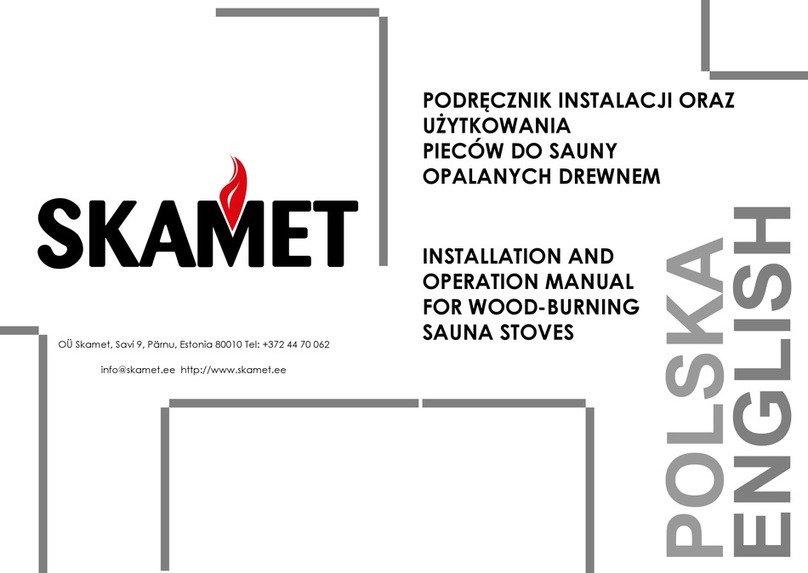
10 |
Opis pieców o sauny z ramami siatkowymi
Piec do sauny jest otoczony ramąsiatkową. S
spalania, poniżej której znajduje siępopielnik, a po bokach oraz nad
komorąjest palenisko. W środku znajduje siękanał
w kształcie trapezu
. Na końcu przewodu spalinowego zamontowana
jest komora dopalania. Pomiędzy komorąspalania a popielnikiem
znajduje sięwąska żeliwna kratka paleniska. Zarówno drzwiczki
komory spalania jak i kratka paleniska
razem próg, który zapobiega wysypywaniu się
dodawania materiału opałowego (patrz - rysunek 1
sauny
). Użytkownik musi zamontowaćuchwyt drzwiowy, który
wymaganymi mocowaniami jest doł
spalania przechodzi przez popielnik i kratkę. Komora dopalania
posiada dwa otwory kominowe (Ø115 mm) z dostę
dymowego w tylnej ścianie pieca, lub u
spalinowy posiada dwa otwory wyczystkowe.
może zostaćwyposażony w
podgrzewacz do wody, którego obj
sięga 3 litrów. Podgrzewacz do wody może być
wszystkimi wewnętrznymi ściankami pieca: po lewej stronie, po
prawej lub w tylnej części. Dwie złączki (z gwintem zewn
umożliwiająodpływ oraz dopływ wody. Nagrzewanie pieca przy
pomocy po
dgrzewacza do wody jest możliwe jedynie wtedy, kiedy jest
on podłączony do bojlera, który z kolei, jest podłą
wodociągowej.
Zabronione jest równieżnagrzewanie pieca do
sauny, kiedy zbiornik wodny jest pusty
używany do ogrzewania wody zarówno w
obiegu, którego ciśnienie robocze nie przekracza 4 kg/ cm².
Odległość pomiędzy piecem do sauny a otaczającągo siatk
wynosi 8-10 cm. Siatka jest
wypełniona kamieniami. Podczas
nagrzewania pieca, kamienie akumulująi
w
palenisku znajduje sięwiele kamieni (po bokach oraz na górze),
nagrzewanie powierzchni wokół pieca zabiera wi
w
przypadku pieca do sauny z metalowąramą. Jednak
kamieni dostarcza do otoczenia wokół pieca
utrzymuje sięprzez dłuższy czas.
We wszystkich modelach pieców do
sauny użytkownik
może bez problemu wymienićmetalowe drzwiczki
na szklane: aby to zrobić, należy
szybą(lub odwrotnie).
bezpiecznie przymocowana
.
Dla modeli przedstawionych na rysunkach 13, 15, i 16,
dodatkowe listwy ozdobne do zakrycia otworów
(szerokość 35 mm). Listwy ozdobne wykonane
(ILU-230 lub ILU-
330) lub ze stali nierdzewnej (ILU
330 RV).
Uwaga: jeżeli temperatura w pomieszczeniu parowym spadnie poni
0˚C, woda musi zosta
ćwypuszczona z obiegu przy pomocy zł
Wstęp o eksploatacji
Zewnętrzn
a rama pieca do sauny (zarówno z drucian
i metalowąobudową
) jest pokryta żaroodpornąfarb
czerwoną), która osiąga ostatecznątwardość
rozpalenia pieca
. Zanim to nastąpi, należy unika
pomalowanej powi
erzchni pieca. Podczas rozpalenia pieca w saunie po
raz pierwszy, farba mięknie. Dlatego wymag
z
pomalowanąpowierzchnią. Substancje, które wydziela pomalowana
powierzchnia mogąnieprzyjemnie pachnieć, d
przeprowadzenie pierwszego palenia
pomieszczeniu parowym o dobrym systemie
miejscu, w którym zainstalowane jest palenisko.
jest
w pomieszczeniu parowym, musi ono byćdobrze wentylowane.
Pierwsze rozpalenie pieca do sauny zawsze
kamieni. Zabrania sięrównieżpolewania kamieni wod
mogązostaćułożone
dopiero po ochłodzeniu się
pierwszego rozpalania w piecu do sauny
wskazane jest zamontow
anie części przejściowej oraz przewodu
dymowego w celu odprowadzenia substancji o nieprzyjemnym
zapachu.
Opis pieców o sauny z ramami siatkowymi
popielnik, a po bokach oraz nad
wentylacyjny
cu przewodu spalinowego zamontowana
eliwna kratka paleniska. Zarówno drzwiczki
tak, by tworzyć
razem próg, który zapobiega wysypywaniu sięwęgląpodczas
wraz z
. Powietrze
posiada dwa otwory kominowe (Ø115 mm) z dostępem do przewodu
piec
podgrzewacz do wody, którego objętość
ciankami pieca: po lewej stronie, po
czki (z gwintem zewnętrznym ¾)
odpływ oraz dopływ wody. Nagrzewanie pieca przy
liwe jedynie wtedy, kiedy jest
czony do bojlera, który z kolei, jest podłączony
do sieci
być
otwartym jak i zamkniętym
nienie robocze nie przekracza 4 kg/ cm².
wypełniona kamieniami. Podczas
utrzymująciepło. Ponieważ
wiele kamieni (po bokach oraz na górze),
nagrzewanie powierzchni wokół pieca zabiera wi
ęcej czasu niż
, które
We wszystkich modelach pieców do
Dla modeli przedstawionych na rysunkach 13, 15, i 16,
dostępne są
wokół drzwiczek
ze stali węglowej
330) lub ze stali nierdzewnej (ILU
-230 RV lub ILU-
eli temperatura w pomieszczeniu parowym spadnie poniżej
wypuszczona z obiegu przy pomocy złączki.
a rama pieca do sauny (zarówno z drucianąsiatką
jak
erzchni pieca. Podczas rozpalenia pieca w saunie po
. Substancje, które wydziela pomalowana
m, w
ny
bez
polewania kamieni wodą. Kamienie
dopiero po ochłodzeniu siępieca. Podczas
na zewnątrz,
dymowego w celu odprowadzenia substancji o nieprzyjemnym
Description of the Sauna Stoves with
The saun
a stove is surrounded by a net
a fire pocket, beneath which there is an ash pan, and on the sides as
well as on top -
a fireplace. In the middle, a trapezoidal exhaust
flue is located. At the end of the exhaust flue, an afterburner is
installed. Between the
fire pocket and the ash pan, a narrow cast
iron combustion grate is located. Both the door of the fire pocket
and the combustion grate are located so as to form a kind of
threshold to prevent coal from falling out when
see Drawing 11: Cr
oss Section of the Sauna Stove
install the door knob included in the sauna stove set along with the
required fasteners. Combustion air passes through the ash pan and
the grate. The afterburner has two flue openings (Ø115 mm), with
access to
the smoke flue in the rare wall of the stove, or to the top.
The trapezoidal exhaust flue has two cleanout
be ordered with a water heater, the volume of which reaches 3
litres. The water heater can be welded to all the internal walls
the stove: on the left, right, or in the rear part. Two nipples
(external thread ¾) enable water outflow and inflow. Heating the
stove with a water heater is only possible when it is connected to a
hot water boiler, which is, in turn, connected to a wat
is also prohibited to heat the sauna stove using empty water tanks.
A water heater can be used to heat water in both open and closed
systems, the working pressure of which does not exceed 4 kg/ cm².
The distance between the sauna stove and t
mesh is 8-10 cm. It is
filled with stones. When heating
stones accumulate and keep heat. As there are many stones around
the fireplace (on the sides and on top), heating the area
stove
also takes more time than in
a metal frame; however, a large number of stones provides a hotter
area around the stove
for a longer period of time.
seamlessly replace the metal door with the glass one on all models
of the sauna stoves: to d
o that, it is necessary to remove the metal
plate and replace it with
the glass one (or vice versa). When
installing glass, it must be securely fastened.
For the model
s shown in Drawing 13, 15, and 16
are available as additional devices to
around the door up to 35 mm on top and
mouldings are
stainless steel (ILU-
Note: if
the temperature in the steam room drops below 0
must be released from the system through the nipple.
The outer frame of the sauna stove (both wire mesh and metal) is
covered with heat-resistant
paint (black or red), which reaches its
final hardness when the sauna stove is burned for the first time.
Before that, avoid scratching the painted surface of the sauna stove.
When burning the sauna stove for the first time, paint softens; for
this reason,
it is required to avoid contact with the painted surfaces.
Substances emanating
from the painted surfaces
unpleasant smell;
that is why it is advisable to burn the stove for
the first time outside
place of installation of
the fireplace. In the case of burning the
stove in the steam room, it must be well ventilated. For the first
time, the sauna stove is always burnt without stones; it is also
prohibited to toss water
the stove has cooled down. When burning the sauna stove for the
first time outside
, it is also desirable to install the transition piece
and the smoke flue for
odorous substances to be released.
Description of the Sauna Stoves with
Net Frames
a stove is surrounded by a net
frame. The stove consists of
a fire pocket, beneath which there is an ash pan, and on the sides as
a fireplace. In the middle, a trapezoidal exhaust
flue is located. At the end of the exhaust flue, an afterburner is
fire pocket and the ash pan, a narrow cast
-
iron combustion grate is located. Both the door of the fire pocket
and the combustion grate are located so as to form a kind of
threshold to prevent coal from falling out when
adding fuel (also
oss Section of the Sauna Stove
). The user must
install the door knob included in the sauna stove set along with the
required fasteners. Combustion air passes through the ash pan and
the grate. The afterburner has two flue openings (Ø115 mm), with
the smoke flue in the rare wall of the stove, or to the top.
The trapezoidal exhaust flue has two cleanout
holes. The stove can
be ordered with a water heater, the volume of which reaches 3
litres. The water heater can be welded to all the internal walls
of
the stove: on the left, right, or in the rear part. Two nipples
(external thread ¾) enable water outflow and inflow. Heating the
stove with a water heater is only possible when it is connected to a
hot water boiler, which is, in turn, connected to a wat
er network. It
is also prohibited to heat the sauna stove using empty water tanks.
A water heater can be used to heat water in both open and closed
systems, the working pressure of which does not exceed 4 kg/ cm².
The distance between the sauna stove and t
he surrounding wire
filled with stones. When heating
the stove,
stones accumulate and keep heat. As there are many stones around
the fireplace (on the sides and on top), heating the area
around the
also takes more time than in
the case of the sauna stove with
a metal frame; however, a large number of stones provides a hotter
for a longer period of time.
The user can
seamlessly replace the metal door with the glass one on all models
o that, it is necessary to remove the metal
the glass one (or vice versa). When
installing glass, it must be securely fastened.
s shown in Drawing 13, 15, and 16
, decor mouldings
are available as additional devices to
cover the wall opening
around the door up to 35 mm on top and
on both sides. Decor
ILU-230 and ILU-330) or of
-330 RV).
the temperature in the steam room drops below 0
˚C, water
must be released from the system through the nipple.
Intro uction into Service
The outer frame of the sauna stove (both wire mesh and metal) is
paint (black or red), which reaches its
final hardness when the sauna stove is burned for the first time.
Before that, avoid scratching the painted surface of the sauna stove.
When burning the sauna stove for the first time, paint softens; for
it is required to avoid contact with the painted surfaces.
from the painted surfaces
may have an
that is why it is advisable to burn the stove for
-ventilated steam room, in the
the fireplace. In the case of burning the
stove in the steam room, it must be well ventilated. For the first
time, the sauna stove is always burnt without stones; it is also
. Stones can only be placed after
the stove has cooled down. When burning the sauna stove for the
, it is also desirable to install the transition piece
odorous substances to be released.
















